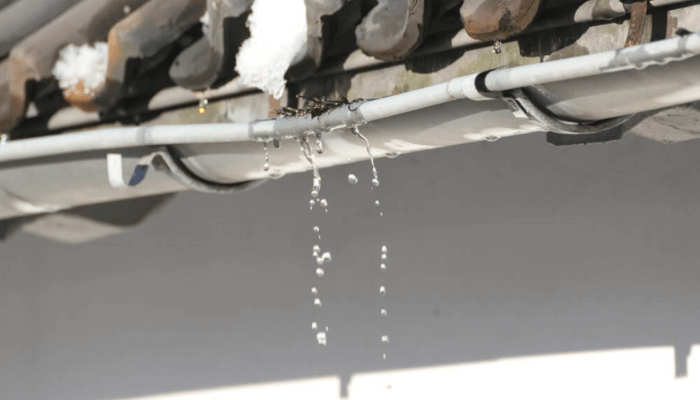A leaking roof can be a homeowner's nightmare, causing water damage, mold growth, and structural issues if left unattended. While it's generally recommended to address roof leaks from the outside, sometimes circumstances may require a temporary fix from the inside. In this guide, we'll explore step-by-step methods to identify, locate, and repair a leaking roof from the interior, minimizing damage until a more permanent solution can be implemented.
Identifying the Leak:
- Safety First: Before attempting any repairs, prioritize safety. Ensure there are no electrical hazards, and use proper personal protective equipment (PPE) such as gloves and safety goggles.
- Trace the Stains: Water stains on ceilings or walls often indicate the general vicinity of the leak. Trace the stains back to their source to pinpoint the area needing attention.
- Check for Mold and Rot: Inspect the affected area for signs of mold growth or rot. These issues may require additional remediation and should be addressed promptly.
- Use a Flashlight: In poorly lit areas, a flashlight can help illuminate potential problem spots. Look for water trails, discoloration, or sagging portions of the ceiling.
Temporary Solutions:
- Tarp or Plastic Sheeting: In cases where the leak is extensive, use a tarp or plastic sheeting to cover the affected area. This will help redirect water away from the interior and protect belongings.
- Buckets and Containers: Strategically place buckets or containers under active leaks to catch dripping water. Empty them regularly to prevent overflow.
- Ceiling Repair: For water-damaged ceilings, consider creating a small hole to allow trapped water to escape. Place a bucket underneath to catch the draining water.
- Utilize Absorbent Materials: Position absorbent materials like towels or rags around the leaking area to soak up excess water. This can prevent further spreading and damage. Read more about how to fix a leaking roof from the inside
Addressing Specific Roofing Materials:
- Asphalt Shingles: If the leak is near a damaged or missing shingle, a temporary fix can involve applying roofing cement or sealant to the affected area.
- Metal Roofing: For metal roofs, check for loose seams or gaps. Seal any visible openings with appropriate roofing sealant.
- Flat Roofing: Flat roofs may develop leaks at seams or around flashing. Apply a roofing sealant or roof patch to these areas, ensuring a watertight seal.
Sealing Interior Cracks and Gaps:
- Use Sealant: Roof sealant is a versatile solution for minor leaks. Apply it generously to cracks, gaps, or seams using a caulking gun.
- Weather Stripping: Check windows and doors for gaps that could be allowing water to seep in. Install or replace weather stripping to create a tighter seal.
- Expandable Foam: In hard-to-reach areas, expandable foam can be useful for sealing gaps. Exercise caution to avoid overapplication, as it expands significantly.
Considerations for Different Roof Structures:
- Attic Leaks: If the leak is in the attic, inspect the area for visible holes or gaps. Patch any openings with appropriate materials.
- Cathedral Ceilings: Cathedral ceilings present unique challenges. Use a moisture-resistant insulation to prevent future leaks and consider consulting a professional for a more permanent solution.
- Vaulted Ceilings: Water may travel along the slope of a vaulted ceiling. Address leaks promptly and inspect the entire slope for potential trouble spots.
Seeking Professional Assistance:
- Consult with a Roofer: While temporary fixes can provide immediate relief, consulting with a roofing professional is crucial for a long-term solution. They can assess the extent of the damage and recommend appropriate repairs.
- Document Damage: Before any repairs, document the damage with photographs. This documentation can be useful for insurance claims or when seeking professional assistance.
- Consider Insurance: Contact your insurance provider to discuss coverage for roof leaks. Some policies may cover interior damage resulting from a covered peril.
Conclusion:
Fixing a leaking roof from the inside requires a combination of quick thinking, temporary solutions, and the eventual expertise of a roofing professional. Timely action, coupled with safety precautions, can minimize damage and provide a temporary reprieve until a more comprehensive repair is possible. Remember, while interior fixes are valuable in emergencies, a thorough inspection and repair from the exterior are essential for a lasting solution to protect your home from the elements. Visit official website onlyroofing.com

